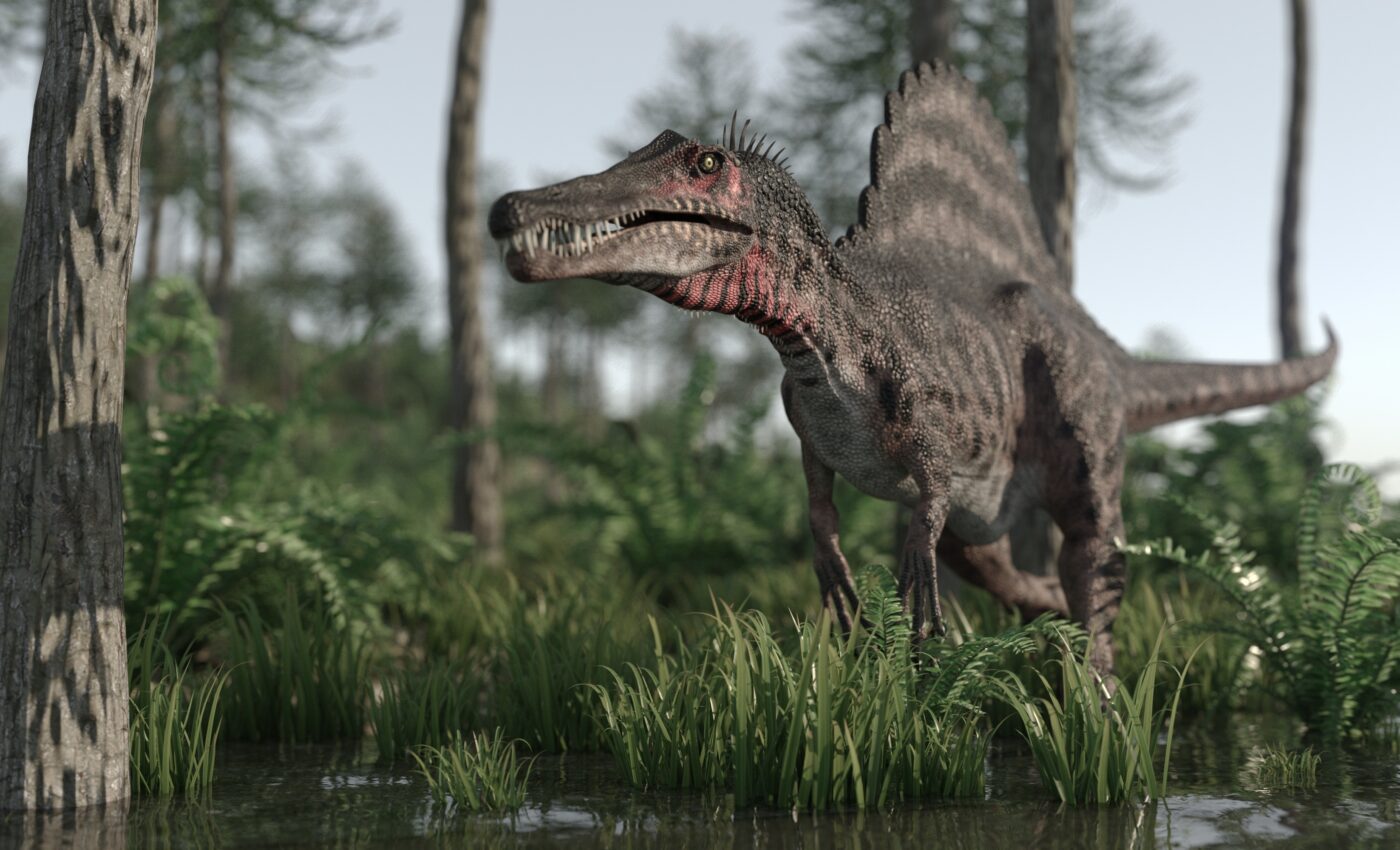
Spinosaurid found in Portugal had a crocodile-like skull
A research team led by the NOVA School of Science and Technology in Portugal has recently redescribed the fossils of a large theropod dinosaur with a crocodile-like skull and spiny back discovered in 1999 around 30 miles south of Lisbon. The remains were initially assigned to Baryonyx walkeri, a genus of theropod dinosaurs that lived in the Early Cretaceous period (130-125 million years ago).
However, new materials recovered in 2020 together with fresh phylogenetic analyses have revealed that the fossils actually belong to a new genus and species, Iberospinus natarioi – a type of spinosaurid that roamed most of the Earth from the Early to Mid-Cretaceous.
“Spinosaurs are some of the most enigmatic theropod dinosaurs due to their unique adaptations to aquatic environments and their relative scarcity,” explained study lead author Octavio Mateus, a paleontologist at NOVA. “Their diet mainly included fish, although other food items, such as pterosaurs, were consumed.”
Iberospinus natarioi (named after Carlos Natario, an amateur paleontologist who discovered the fossils in 1999) was a medium-sized spinosaur, with a length of about 33 feet and a weight of three tons. It had a massive skull and spiny back similar to those of today’s crocodiles, and most probably waded into the water to prey on fish.
One of the most striking features of this dinosaur is its unique pattern of nearly constant teeth replacement, with new teeth growing in its jaws always ready to replace those used or damaged as a result of hunting. Among the fossils discovered near Lisbon, scientists found tooth sockets with two replacement teeth in development next to the one in use. Although frequent teeth replacement is known to be quite common among spinosaurids, Iberospinus natarioi seemed to have a much quicker turnaround time than its relatives.
According to Professor Mateus and his colleagues, the rather unusual body plan of this dinosaur and related spinosaurids is an adaptation to the largely aquatic environments in which they hunted, “either as specialized pursuit aquatic predators in some cases or as wading-ambush hunters, like herons.”
The remains of this dinosaur form one of the most complete spinosaurid specimens discovered until now, and offers further evidence that the spinosaurid clade possibly originated in the territory of today’s Western Europe.
A detailed description of Iberospinus natarioi is published in the journal PLOS One.
—
By Andrei Ionescu, Earth.com Staff Writer













